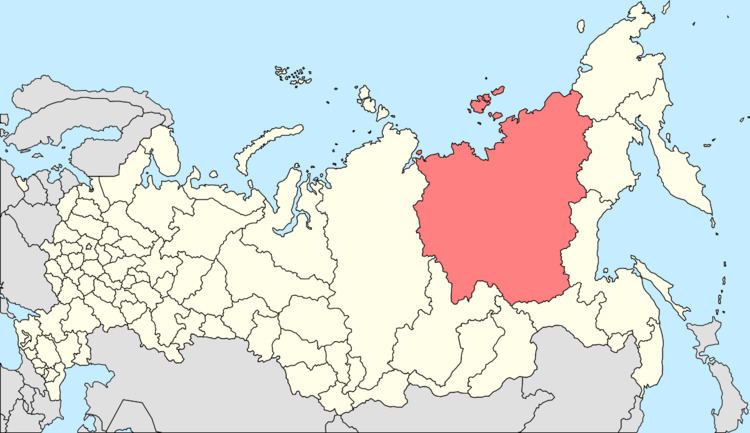Administrative district Zhigansky District Administrative center of Zhigansky Rural Okrug Local time Monday 4:40 AM | Rural okrug Zhigansky Rural Okrug Founded 1632 Number of airports 1 | |
 | ||
Municipal district Zhigansky Municipal District Weather -3°C, Wind S at 21 km/h, 84% Humidity | ||
Zhigansk tricking 2014
Zhigansk (Russian: Жига́нск; Yakut: Эдьигээн) is a rural locality (a selo) and the administrative center of Zhigansky District in the Sakha Republic, Russia, located on the left bank of the Lena River near where it is joined by its tributary the Nuora, approximately 600 kilometers (370 mi) northwest of Yakutsk, the capital of the republic. Population: 3,420 (2010 Census); 3,346 (2002 Census); 4,511 (1989 Census).
Contents
- Zhigansk tricking 2014
- Map of Zhigansk Sakha Republic Russia 678330
- History
- Transportation
- Climate
- References
Map of Zhigansk, Sakha Republic, Russia, 678330
History
It was founded in 1632 as an ostrog by Cossacks led by Pyotr Beketov. In 1783, Zhigansk was granted town status and made the seat of a newly created uyezd within Yakutsk Oblast. It lost this function in 1805 with the dissolution of the uyezd, but remained the most northerly town on the Lena until 1917, when it was demoted to rural status.
In 1930, Zhigansk became the administrative center of the newly created Zhigansky District, which was declared an "Evenk National District" due to its large population of Evenks. In 2002, Evenks represented around 47% of the local population and Yakuts a further 34%.
Transportation
Zhigansk is served by the Zhigansk Airport.
There is no year-round road access to Zhigansk, but during the summer months Yakutsk is reachable via boat on the Lena. In the months when the river is frozen, a winter road also leads to Yakutsk.
Climate
Zhigansk has an extreme subarctic climate (Köppen climate classification Dfd), with extremely cold winters, although not quite as cold as Verkhoyansk or Oymyakon further east. Precipitation is quite low but is somewhat higher in summer than at other times of the year.
